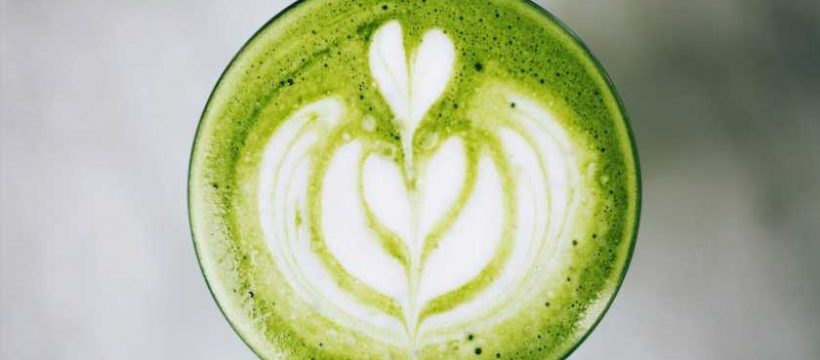Matcha has been around for centuries in East Asia, but recently, more of us have been turning to the green stuff for an energy boost.
Head into any high-end coffee shop these days and among the oat flat whites and macchiatos, you’ll find another, less caffeinated option: matcha latte. It’s the frothy green stuff that looks deeply suspicious but smells delicious.
More and more of us are turning to matcha for a pick-me-up. Even if you do drink coffee, you might have a matcha in the afternoon if you’re looking for something (slightly) lower in caffeine. Anyone struggling with stress or adrenal issues may pick matcha to soften potential cortisol spikes. And then there are those of us who just like the earthy, deep taste (especially when mixed with a dollop of maple syrup).
You may also like
Green tea: how the herbal drink could help muscle recovery and exercise performance
But given how beneficial we know coffee is to gut health, what benefits might matcha offer? And might the green tea drink actually be healthier than your go-to cup of coffee?
What is matcha?
Matcha is finely powdered green tea, which is usually mixed with hot water or milk to make a creamy drink. But while it comes from the same plant as the tea you might already be familiar with, it’s grown and prepared differently. Because the leaves are ground into a powder, you end up consuming the whole leaf – rather than just benefiting from a leaf infusion. It’s worth remembering that matcha does in fact contain caffeine, but generally – depending on how strong you like your drinks – it contains less than your average coffee (a 235ml serving of coffee might contain anywhere from 95 to 200mg of caffeine, whereas the average 235ml cup of matcha will contain around 70mg of caffeine).
In the summer, you can pour it over ice cubes for the ultimate iced cooler. It can be cooked with (anyone remember the episode of Come Dine With Me when one bloke tried to make matcha ice cream?) or used to dye foods green, but the really high-quality stuff is best left for drinking.
Its history dates way back to the Chinese Tang dynasty (starting in around (AD618), when tea leaves were steamed and packed into tea bricks. They used to smash those bricks back down to make a fine powder, which was then brewed into a drink using hot water.
What are the benefits of drinking matcha?
Aside from its distinctive taste, matcha has some serious health benefits to offer:
High in antioxidants
Remember, matcha is pulverised green tea, and we know that green tea is full of helpful plant chemicals known as catechins. However, because you’re consuming more of the tea leaf, it’s believed that you’re actually getting 137 more catechins in a matcha drink than you would in a cup of green tea.
Catechins are important anti-inflammatories, proven to help prevent or reduce the symptoms of illnesses like inflammatory bowel disease. They also help the body to absorb nutrients from food, as well as providing anti-microbial, anti-viral and anti-allergenic assistance to the body.
Full of brain-boosting chemicals
Various studies have found that matcha can help to improve cognitive function, and part of its appeal is that it contains a compound called L-theanine. L-theanine works with caffeine to promote alertness but prevents the energy crash that come a few hours after the high. It’s also been proven to increase alpha wave brain activity, which is known to increase relaxation and decrease stress levels.
Offers liver protection
Our liver is an absolutely vital organ that needs to be operating optimally in order for us to expel toxins. While it does a jolly good job of repairing itself from daily wear and tear, it’s a good idea to consume things that are known to give it that extra boost – and matcha is one such food. One animal study found that consuming matcha for 16 weeks could prevent damage to both the kidneys and liver, while other human studies have found an association between green tea consumption and reduced rick of liver disease.
Is matcha healthier than coffee?
We’ve previously reported that, according to gut supremo Dr Tim Spector, coffee should be regarded as a ‘health drink’ because of its incredible gut health-boosting properties. In fact, he actually went so far as to say that coffee may be healthier than green tea because of its fibre intake.
But matcha (remember, it’s the whole green leaf) is also high in fibre, as well as vitamins B1, B2, B6, C, E and K. Both drinks are packed with polyphenols and antioxidants, so there’s not much in it.
However, the benefits of coffee drinking have been researched again and again and we have huge, long-term studies to prove just how beneficial coffee is to heart health, longevity, disease prevention and more. There aren’t the same quality or quantity of studies to confirm the benefits of matcha yet – despite the drink being over 1,000 years old.
How to make the perfect matcha latte
Stylist’s very own Ellen Scott is something of a matcha obsessive, so who better to turn to for tips on making the perfect latte?
- Take a teaspoonful of matcha (I like Bird & Blend’s flavoured options, especially for matcha beginners) and pop it in a bowl with a few tablespoons of hot water.
- Whisk until you have a smooth, lump-free mix. The best tool for the job is a bamboo matcha whisk, but a milk frother or a fork will do in a pinch. Move your whisk in a ‘W’, back and forth motion, rather than in circles – it makes a big difference.
- Add a teaspoon of sweetener to the mix, then pour from your bowl into your mug.
- Warm and froth the milk of your choice, then pour on top of your matcha mix.
Images: Getty
Source: Read Full Article
